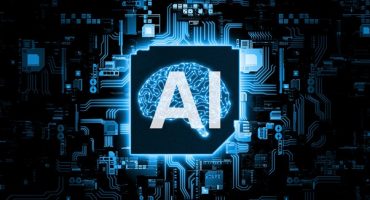
With a major technical skills shortage plaguing companies across many different industries, the use of AIOps among DevOps teams can play a crucial role, helping them ensure the quality of the software that they develop and deliver.
AI has helped to automate many tasks – from document processing to warehouse assembly lines and health scans, but what about automating IT operations? That’s one of the newest frontiers in AI, and it’s receiving widespread recognition. Enter AIOps.
There are many “ops” today – whether it is AIOps, MLOps, ModelOps, or DevOps, but just to be clear, Artificial Intelligence for AI operations (AIOps) leverages machine learning and big data to monitor IT operations, such as event correlation, outlier detection, and determining the root cause of problems. The ultimate goal is to boost IT operations efficiency. According to Gartner, “large enterprises’ exclusive use of AIOps and digital experience monitoring tools to monitor applications and infrastructure will rise from 5% in 2018 to 30% in 2023.”
The rise of AIOps comes at a perfect time. With a major technical skills shortage plaguing companies across many different industries, the use of AIOps among DevOps teams can play a crucial role, helping them ensure the quality of the software that they develop and deliver.
Another reason why AIOps is gaining in popularity is the plethora of data that organizations are gathering — across departments and roles and externally from suppliers and partners. It can be impossible for IT professionals to leverage all that data without AI support. AIOps platforms consume and analyze the ever-increasing amount, type, and speed of data generated by IT and present it in a useful way.
AIOps enables them to make sense of that data and automate operations across critical IT operations functions:
- Data selection. Identifying the most crucial information from the vast amounts of data.
- Events Correlation: Correlating and finding relationships between events across the entire IT spectrum and then analyzing them.
- Inference. Identifying the root cause of recurring problems
- Collaboration. Communicating and sharing information with various team members across the DevOps organization.
- Resolution. Automatically resolving the problem.
In addition to the growing complexity of IT operations and the dearth of IT talent, the traditional IT operations team has changed drastically over the past few years because of the pandemic. Many IT staff members have transitioned to a remote or hybrid work environment, which adds to the complexity. AIOps ensures that this type of change does not impact smooth and consistent IT operations.
See also: Why Digital Transformation Drives the Need for AIOps
Best Practices for AIOps Adoption
For companies looking to build AIOps into their IT process infrastructure, below are some key considerations.
- Gain enterprise-wide buy-in. The deployment of AIOps is a form of digital transformation not only within an IT team but something that affects an entire enterprise. It’s important to educate company leaders about the role of ITOps so that they can evangelize the rest of the company and instill the value of automation and digital innovation.
- Audit your data. AIOps is all about the data. You will need access to all data, including unstructured data, within logs, real-time data, API outputs, and device data, as well as structured business data within databases, social sites, and other sources. The more relevant data you have, the more accurate will your AIOps predictions be.
- Take incremental steps. As with every digital transformation, it’s important to start small. Test out the use of AIOps, gathering feedback from IT teams as you go and improvising accordingly.
- Document the process. In order for effective AIOps to be deployed, it, must understand how the process always has been. It’s important to document standard operating procedures, workflows, and steps that have been taken.
- Understand the costs. It’s important to consider that there will be costs for licensing the AIOps solution, the hardware it will reside on, as well as installation and training costs.
- Vet the vendors. Some companies only provide algorithms, and others provide the full continuum of services. It’s important to determine what your needs are and understand not only the technical qualifications of the AIOps solution provider but also its understanding of your industry and business environment.
- Make sure it is scalable. Since it’s important to start small with any digital transformation initiative, you should make sure that whatever solution you choose can scale to meet new requirements in your IT department.
As the complexity of IT operations keeps pace with the urgency of business, there’s little wriggle room for downtimes in systems, applications, and networks. Those companies that have implemented AIOps have experienced fewer system downtimes, shorter remediation times when there are problems, and early detection of problems. Most importantly, it enables a better user experience – for IT teams and end-users alike.



























